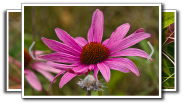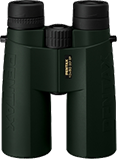two-lined chestnut borer
(Agrilus bilineatus)
Conservation • Description • Habitat • Ecology • Distribution • Taxonomy
|
|
||||||||||||||
Description |
Two-lined chestnut borer is a native, small to medium-sized, metallic wood boring beetle. It occurs in the United States east of the Great Plains. It occurs in southern Canada in Quebec and Ontario. Two-lined chestnut borer was historically associated with chestnut decline, but after the near eradication of the American chestnut by blight, its primary host shifted to oaks. It is often a “secondary pest,” preying on weakened or stressed trees, although it can attack healthy ones under certain conditions (e.g., during widespread outbreaks after severe environmental stressors). Adults are active in Minnesota from late May to early August. They are found in deciduous forests and woodlands, in parks, and in urban and residential areas, anywhere oak trees are found. They feed on the leaves of oak trees. The larvae feed on the inner bark (cambium) and outer wood of the trunk and larger branches, creating winding tunnels (mines). In Minnesota, they attack black oak, bur oak, chinkapin oak, northern red oak, and white oak. Adults are small. They can be ⅛″ to ½″ (4 to 12 mm) in length, but they are usually no more than ⅜″ (10 mm) in length. The body is somewhat bullet-shaped, rigid, narrow, elongate, and slightly flattened. It is black with metallic reflections. The head is flat, and it is slightly tucked beneath the first segment of the thorax (prothorax). The eyes are kidney shaped. The antennae are short and have 11 segments. Segments 1 through 3 are cylindrical. Segments 4 through 11 are sawtoothed. The mouthparts are projected downward. On the male the face is green. The upper plate covering the prothorax (pronotum) is wider than long. There is no ridge (prehumeral carina) in the shoulder region. There is a bold, whitish or yellowish, longitudinal stripe on each lateral margin. The wing covers (elytra) are slightly narrowed before the middle and tapered beyond the middle toward the tips. The tips are separated, broadly rounded, and finely toothed. Toward the tip the inner margins are slightly elevated. Each elytron has a stripe of whitish or yellowish, appressed hairs extending from the shoulder (humeral) area toward but not reaching the tip. The sides of the abdomen, visible below the elytra when viewed from the side, are densely covered with whitish or yellowish appressed hairs. The last upper abdominal segment has a ridge (pygidium) that extends beyond the tip of the abdomen as a blunt, slightly notched “spine”. The last part of each leg (tarsus), corresponding to the foot, has five segments. There is a pair of claws at the tip on the last tarsal segment. The claws are split, and the tips of each split claw are widely separated. |
Size |
Total length: ⅛″ to ½″ (4 to 12 mm) |
Similar Species |
Habitat |
Deciduous forests and woodlands, parks, urban and residential areas |
Ecology |
Season |
Late May to early August |
Behavior |
|
Life Cycle |
|
Larva Hosts |
Black oak, bur oak, chinkapin oak, northern red oak, and white oak |
Adult Food |
Leaves of the larval hosts |
Distribution |
||
|
Sources Biodiversity occurrence data published by: Minnesota Biodiversity Atlas (accessed through the Minnesota Biodiversity Atlas Portal, bellatlas.umn.edu, 6/14/2025). Hallinen, Marie J; Steffens, Wayne P; Schultz, Jennifer L; Wittman, Jacob T; Aukema, Brian H. (2021). The Jewel Beetles of Minnesota. Retrieved from the University Digital Conservancy, https://hdl.handle.net/11299/218928. |
|
| 6/14/2025 | ||
Occurrence |
||
|
||
Taxonomy |
|
Order |
Coleoptera (Beetles) |
Suborder |
Polyphaga (Water, Rove, Scarab, Long-horned, Leaf, and Snout Beetles) |
Infraorder |
Elateriformia |
Superfamily |
Buprestoidea |
Family |
Buprestidae (jewel beetles) |
Subfamily |
Agrilinae |
Tribe |
Agrilini |
Subtribe |
Agrilina |
Genus |
|
Subgenus |
|
Subordinate Taxa |
|
|
|
Synonyms |
|
Agrilus aurolineatus Agrilus bilineata Agrilus bivittatus Agrilus flavolineatus Buprestis bilineatus |
|
Common Names |
|
twolined chestnut borer two-lined chestnut borer |
|
Glossary
Cambium
A thin layer of soft growing tissue composed of unspecialized cells in the stems of plants. It provides new xylem to the inside and new phloem to the outside.
Carina
An elevated keel or ridge.
Elytra
The hardened or leathery forewings of beetles used to protect the fragile hindwings, which are used for flying. Singular: elytron.
Pronotum
The exoskeletal plate on the upper side of the first segment of the thorax of an insect.
Prothorax
The first (forward) segment of the thorax on an insect, bearing the first pair of legs but not wings.
Tarsus
On insects, the last two to five subdivisions of the leg, attached to the tibia; the foot. On spiders, the last segment of the leg. Plural: tarsi.
Tibia
The fourth segment of an insect leg, after the femur and before the tarsus (foot). The fifth segment of a spider leg or palp. Plural: tibiae.
Visitor Photos |
||
Share your photo of this insect. |
||
This button not working for you? |
||
Alfredo Colon |
||
 |
 |
|
 |
||
MinnesotaSeasons.com Photos |
||
|
||
|
||

Slideshows |
|

Visitor Videos |
||
Share your video of this insect. |
||
This button not working for you? |
||
|
Other Videos |
||
|

|
Created: 6/14/2025 Last Updated: © MinnesotaSeasons.com. All rights reserved. |


